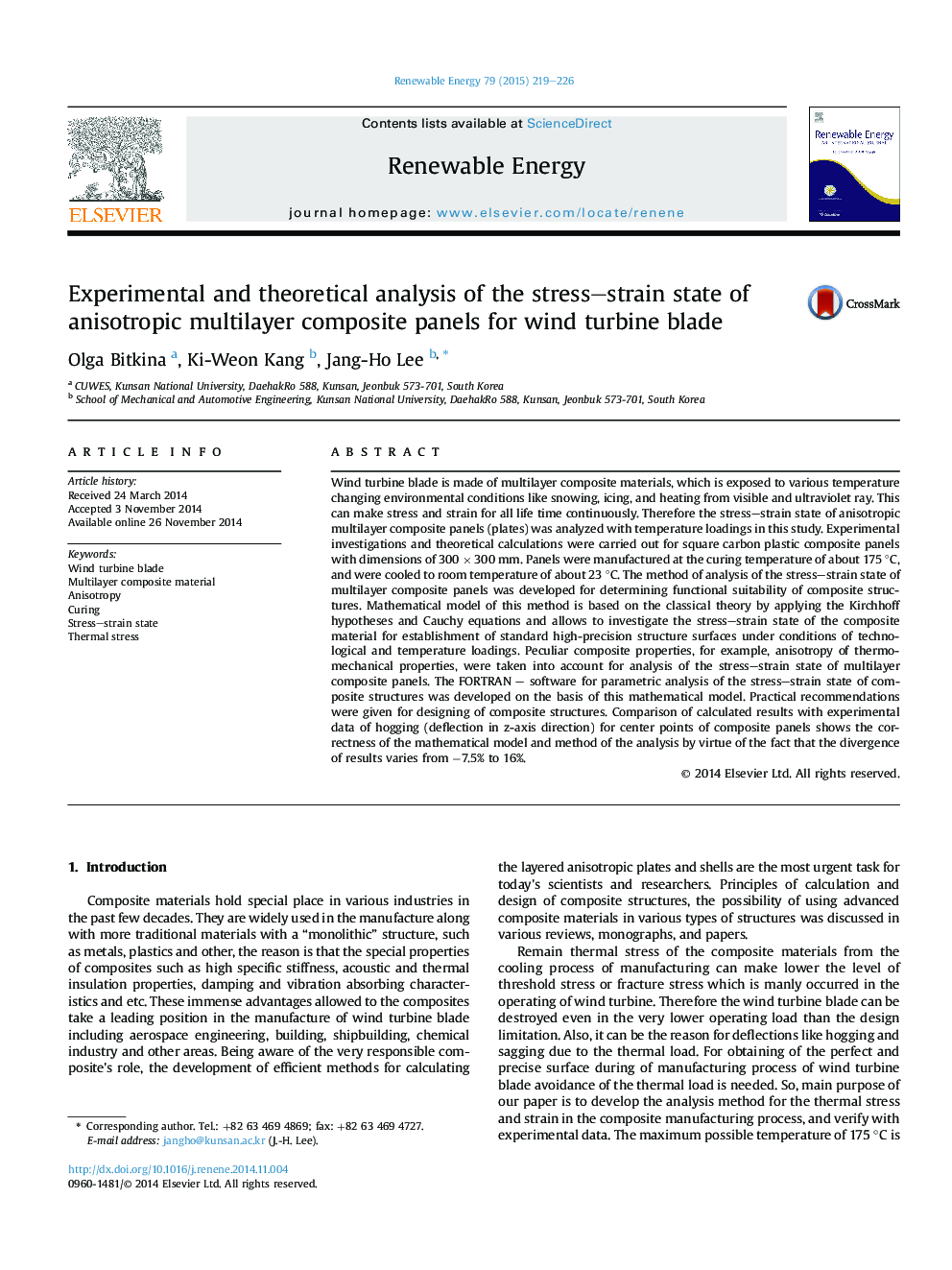| کد مقاله | کد نشریه | سال انتشار | مقاله انگلیسی | نسخه تمام متن |
|---|---|---|---|---|
| 299943 | 512459 | 2015 | 8 صفحه PDF | دانلود رایگان |
• A numerical method for the thermal stress in manufacturing process is developed for composite materials of wind turbine blade.
• It is verified with experimental data of possible maximum curing temperature for higher content of carbon materials.
• Calculated data shows close to experimental values and enough to use for the analysis of thermal impacts on composites.
• It is found that thermal stress with small increase of disorientation angle can make destruction of the composite materials.
Wind turbine blade is made of multilayer composite materials, which is exposed to various temperature changing environmental conditions like snowing, icing, and heating from visible and ultraviolet ray. This can make stress and strain for all life time continuously. Therefore the stress–strain state of anisotropic multilayer composite panels (plates) was analyzed with temperature loadings in this study. Experimental investigations and theoretical calculations were carried out for square carbon plastic composite panels with dimensions of 300 × 300 mm. Panels were manufactured at the curing temperature of about 175 °C, and were cooled to room temperature of about 23 °C. The method of analysis of the stress–strain state of multilayer composite panels was developed for determining functional suitability of composite structures. Mathematical model of this method is based on the classical theory by applying the Kirchhoff hypotheses and Cauchy equations and allows to investigate the stress–strain state of the composite material for establishment of standard high-precision structure surfaces under conditions of technological and temperature loadings. Peculiar composite properties, for example, anisotropy of thermo-mechanical properties, were taken into account for analysis of the stress–strain state of multilayer composite panels. The FORTRAN – software for parametric analysis of the stress–strain state of composite structures was developed on the basis of this mathematical model. Practical recommendations were given for designing of composite structures. Comparison of calculated results with experimental data of hogging (deflection in z-axis direction) for center points of composite panels shows the correctness of the mathematical model and method of the analysis by virtue of the fact that the divergence of results varies from −7.5% to 16%.
Journal: Renewable Energy - Volume 79, July 2015, Pages 219–226
